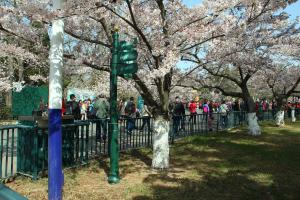Who Planted Magnolia Trees in Mississippi Highways?
One of the most iconic sights in Mississippi highways is the magnolia tree, the state flower. It is said that the trees were planted along the highways to symbolize the beauty of nature and the state's commitment to preserving its natural resources. But who actually planted these trees?
The Origins of the Magnolia Trees in Mississippi Highways
The first magnolia trees along Mississippi highways were planted around the 1930s by the then State Highway Department. The State Highway Department was tasked with building and maintaining the state's highways and they saw the opportunity to beautify the roads while also showcasing the state flower.
According to records, the first magnolia trees were planted along US 61 in the Mississippi Delta. These trees quickly became popular among residents and motorists, and soon enough, the State Highway Department began planting them along other highways in the state.
The Significance of Magnolia Trees in Mississippi Highways
The magnolia tree is a symbol of beauty, endurance, and strength. The tree's fragrant white flowers bloom during the summer months and its green leaves provide shade during the hot Mississippi summers. The trees' branches form a beautiful canopy over the highways, providing motorists with a serene and peaceful environment.
But more than just its beauty, the magnolia tree also has historical significance. It is believed that the magnolia tree was one of the first trees to be cultivated in North America. It was also used by Native Americans for medicinal purposes and was a common feature in Southern plantations during the antebellum period.
The Future of Magnolia Trees in Mississippi Highways
Today, Mississippi highways are lined with thousands of magnolia trees. These trees remain an important symbol of the state's commitment to conservation and preserving its natural resources. The Mississippi Department of Transportation continues to plant magnolia trees along the highways and has even introduced other native species such as dogwoods and crape myrtles.
However, the magnolia trees are not without their challenges. They require regular maintenance and care to keep them healthy and looking beautiful. In addition, some have criticized the state's continued planting of magnolia trees, arguing that there are other species that are better suited for the state's ecology and climate.
Conclusion
The magnolia tree has become an iconic feature of Mississippi highways, symbolizing the state's beauty, endurance, and commitment to preserving its natural resources. While there are challenges in keeping these trees healthy and beautiful, the continued planting of magnolia trees underscores the importance of conservation and preserving the beauty of the state's highways.

 how many times do yo...
how many times do yo... how many planted tre...
how many planted tre... how many pine trees ...
how many pine trees ... how many pecan trees...
how many pecan trees... how many plants comp...
how many plants comp... how many plants can ...
how many plants can ... how many plants and ...
how many plants and ... how many pepper plan...
how many pepper plan...

































